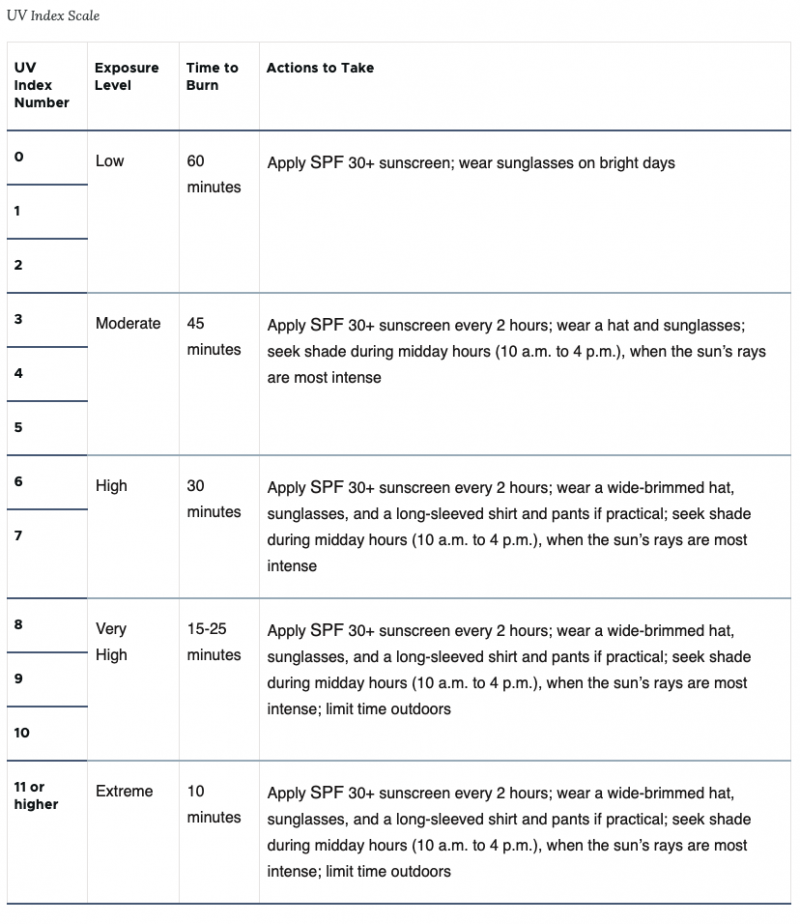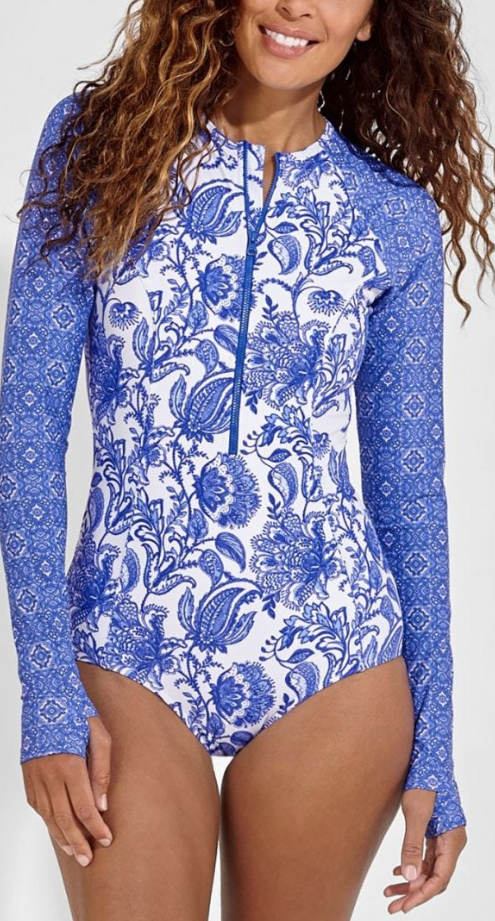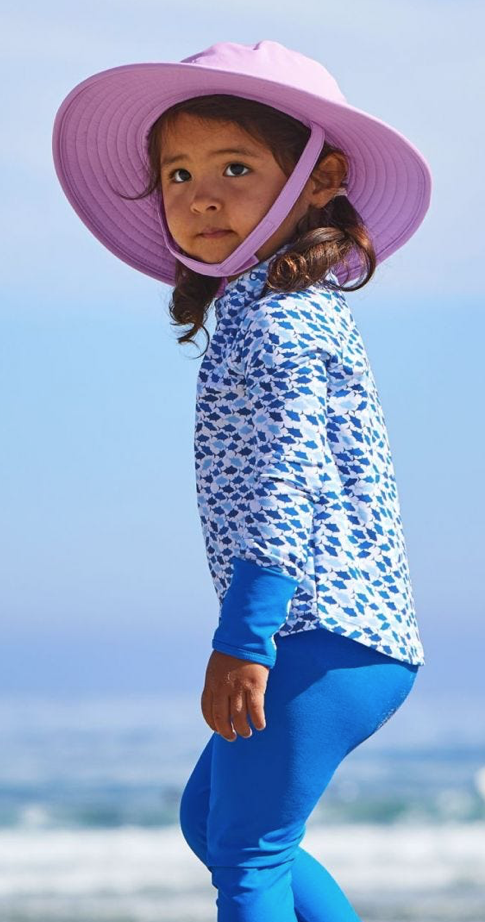Summer is almost here and we are so ready for it. But with summer always comes a significant increase in sun exposure, at least for most of us. We know you know to use sunscreen, but we wanted to know more ~ the latest scoop on Sun Damage, Risks, Skin Cancers, and Protection.
We asked the experts at Dermatology, Laser & Vein Specialists of the Carolinas about what we should be on the lookout for, and how to prep now in order to keep our skin cancer-free and looking good at any age.

When Do I Need to Worry?
Dr. Gilly Munavalli gets straight to the point: If you notice anything on your skin that is new, changing or growing, get it checked out by a dermatologist.
You need to learn what skin cancers look like, and starting in your 20s have your skin checked annually. Yes, that’s right, your mid-20s. If you have fair skin or experience a lot of sun exposure, consider bi-annual visits to ensure all the lumps and bumps remain friendly. Most health insurance covers part or all of an annual skin cancer screening (although it never hurts to check first).
What Am I Looking For?
In addition to an annual dermatology visit, self-check your skin regularly. You know your body best, and the scary part is some types of skin cancers, like melanoma, can present in areas that are rarely or never exposed to the sun. Think the sole of your foot and between your toes.
Here’s the breakdown:
- Look for color – if the color is uneven or varied in the ‘spot or mole’ it could be a problem.
- What is the shape and border like – if the two halves look different or if the border is irregular make an appointment.
- Keep an eye on it – if it changes and starts to look different it’s best to get it checked out.
Skin Cancer in the Family?
Dr. Munavalli says “For the most common skin cancers – basal cell and squamous cell carcinoma, genetics isn’t as much of an issue. For melanoma in a family member, or first degree relative, this does raise a patient’s risk so they may be asked to come in more frequently for skin checks and should be performing self-skin examinations at home.”
You and the UV Need to Find Some Common Ground
Make friends with the UV index – it may be one of your less complicated relationships and reaching an understanding can certainly save you a lot of heartache.
Here’s what you need to know: The UV index is a measure of the amount of damaging ultraviolet rays that theoretically reach the ground and can cause skin damage.
The UV index formally comprises four variables:
- The thickness of the ozone layer
- The cloud cover (clouds block UV radiation to varying degrees)
- The time of year (in winter, UV radiation is lower than in the summer because of the sun’s angle)
- The elevation (higher elevations get more UV radiation)
How to find the UV index wherever you are?
The U.S. National Weather Service (NWS) and the Environmental Protection Agency (EPA) measure ultraviolet levels on a daily basis, and use these numbers to create daily exposure forecasts and the US UV Index. You can google it, or go to a weather site like The Weather Channel to see the UV Index as part of your daily weather forecast. This chart from The Almanac offers a general recommendation on sun protection based on UV.

Factor in These Acronyms in Your Fashion
Once you’re in a good place with the UV index, UPF needs some love too.
Dr Munavalli says “UPF is the rating system used for apparel. It’s similar to SPF (Sun Protection Factor), the rating system used for sunscreen products. SPF pertains only to a sunscreen’s effectiveness against UVB radiation from sunlight. UPF, though, gauges a fabric’s effectiveness at filtering both ultraviolet A (UVA) and ultraviolet B (UVB) light.”
In summary, shop for a higher UPF rating number and greater skin coverage in order to get better sun protection. Checkout this chart:
| UPF Rating | Protection Category | Effective UV Transmission (%) |
| 15 | Minimum | 6.7 |
| 30 | Good | 3.3 |
| 50+ | Excellent | 2.0 |
A UPF rating of 30 indicates the fabric of a garment will allow 1/30th (roughly 3 percent) of available UV radiation to pass through it. A garment rated UPF 50 permits only 1/50th (roughly 2 percent) UV transmission. Any fabric that allows less than 2 percent UV transmission is labeled UPF 50+.
What about ‘non-UPF’ clothing, like a tee shirt? A typical white cotton T-shirt offers about a UPF 5 rating, which means that 1/5th (roughly 20%) of available UV radiation passes through it. Note to self.
Big Brim is Best
Hats should not be see-through or have a mesh component in order to provide maximum protection. Test this: If you hold your hat up to the light and you can see through it, it’s not offering optimal protection.
It goes without saying, but we’ll say it ~ the broader the brim of the hat, the better. A baseball cap is cute, but leaves the sides of your face and neck completely exposed. For optimal protection, pick a sun hat that shades your ears and nose which are the two most common areas on the face for the development of skin cancer.
Set Boundaries with the Sun
Breakup with the sun between 10:00 a.m. – 4:00 p.m. Dr. Munavalli says this is key to avoiding sun damage. Rework your day if you can, to limit exposure during this timeframe.
Think about the sun when you’re driving too; Dr. Munavalli notes that sun damage from driving is a real phenomenon, stating “Vehicle glass doesn’t typically protect against all UV rays and you can get photoaging changes from prolonged sun exposure in cars.” Take a look at the left side of your face, neck and even your left arm. Does it show more sun damage? Wear sunscreen, every day.
Tanning Beds are a Major No
Surely, we’ve all transitioned to spray tans, so we’re not thinking you need to be reminded of this. But just in case you still take to the bed, know that tanning beds are likely more damaging than the sun, due to the high intensity of the “rays” and the exposure to UVA, UVB and sometimes inadvertently UVC.
Products That Prevent and Protect
Sunscreen:
We all know we need to wear sunscreen, but not all sunscreens are created equal.
Oral Supplements:
Dr. Munavalli recommends plant-based products such as polypodium Leucotomos: “Many oral supplement products have been proven to be beneficial, along with sunscreen for protection against UV rays. Niacinamide is also protective against the formation of skin cancers. For example, both of these are found in SUNISDIN which is designed to defend against photoaging and enhance general skin health as part of your daily skincare routine.
Don’t Wait
There’s always something to get done, just make sure one of those things is scheduling an annual skin check with a dermatologist.
More than one third of all cancers originate in the skin, coupled with a rate of 1 in 5 people developing skin cancer. The total number of skin cancers diagnosed annually in the United States is estimated at one million.
Remember:
- Learn what skin cancer looks like so you can detect it early
- Add sunscreen and supplements to your daily routine
- Fashion forward choices include a high UPF rating
- Limit sun exposure between 10:00 a.m. – 4:00 p.m.


